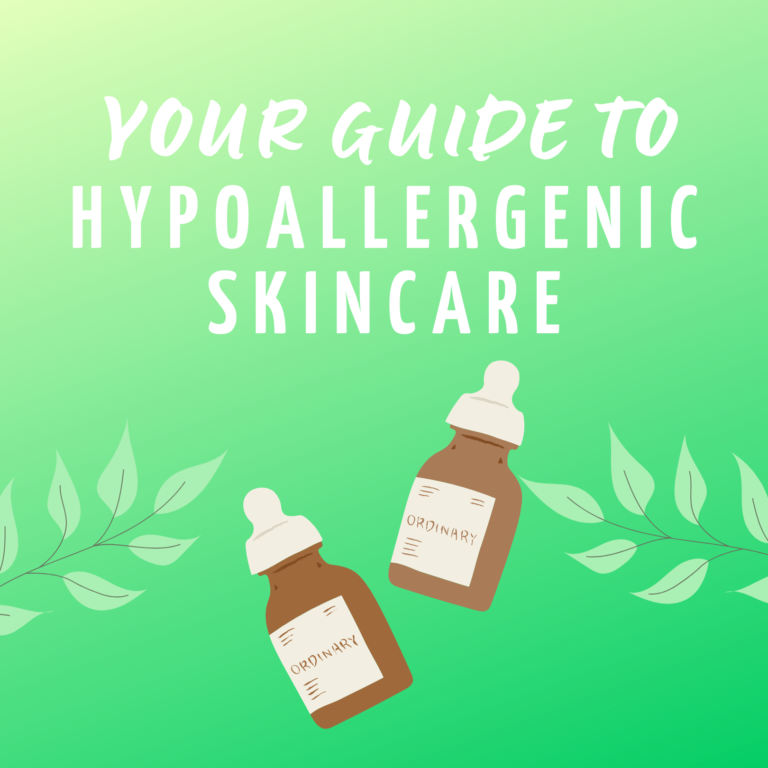Do you ever happen to buy skincare products based on its “hypoallergenic” claim on the label? If your skin gets easily irritated or has negative reactions to skincare products, you might be one of those people. However, is it really worth looking for this specific phrase on your label? Keep reading to find out!
What Is Hypoallergenic?
When skincare and cosmetic manufacturers use ‘hypoallergenic’ on their product labels, it shows that the product contains fewer ingredients that commonly cause allergies. This, in theory, means there is a lesser chance of causing a bad reaction for your skin. This also goes for ‘safe for sensitive skin’ or ‘allergy tested’ claims. Nevertheless, there’s no way we can actually be 100% certain that these claims cover all ingredients that may cause unwanted reactions to every consumer using it!
One important thing to note is that manufacturers are not required to submit proof to the Food and Drug Administration (FDA) to back up their claims. Therefore, the term ‘hypoallergenic’ or other similar terms can mean whatever the manufacturers want it to mean.
Fun Fact: In the 70s, the FDA attempted to establish testing requirements to determine whether a product is really hypoallergenic. Unfortunately, they were unable to establish those requirements. To this day, there are still no specific standards or guidelines to define the term ‘hypoallergenic.’ Plus, manufacturers may continue to label and advertise their products as ‘hypoallergenic’ without any supporting evidence.
What Are Some Common Allergy-Inducing Skincare Ingredients?
Here’s a list of ingredients that may trigger your sensitive skin:
- Fragrances
- Alcohol
- Essential Oils
- Propylene Glycol
- Formaldehyde-releasing Preservatives
- Methylisothiazolinone
What Can We Do As Consumers?
In reality, it is practically impossible to create cosmetic or skincare products that are guaranteed to never cause an allergic reaction to everyone. Each person may react differently to the same ingredient! As a consumer, it is our responsibility to inform ourselves and be wise in choosing and buying products that we put on our skin. Here are some tips on what you can do to shop smarter:
Read the ingredients list! This is a great first step to avoiding ingredients that may cause sensitivity or skin reactions. If you already know you are allergic or have sensitivities to certain ingredients, you can steer clear of the product altogether by reading the ingredients list.
Opt for products with simple ingredients. Products with simple ingredients or small ingredient list can minimize the risk of unwanted reactions.
Look for products that can help strengthen and restore the skin barrier. Our skin barrier functions as protection. When that protective layer is disrupted, our skin becomes more susceptible to external aggressors such as allergens and sensitizers. Gentler skincare products with ingredients like ceramides, hyaluronic acid, and glycerin can help undo the damage.
Do a patch test. Apply a small amount of product to a small area behind the ear, side of the neck, or jawline. Observe for reactions in 24-72 hours. Afterward, perform the test for at least 2-3 days before you start applying the products as directed.
Be Picky
Learn more about skincare science on the Picky app! Here you will find all the latest skin trends, reviews, discussions, giveaways, and more. Also, don’t forget to also find Picky on Instagram, Youtube, and Tiktok to get more daily skincare content!
Made With



















